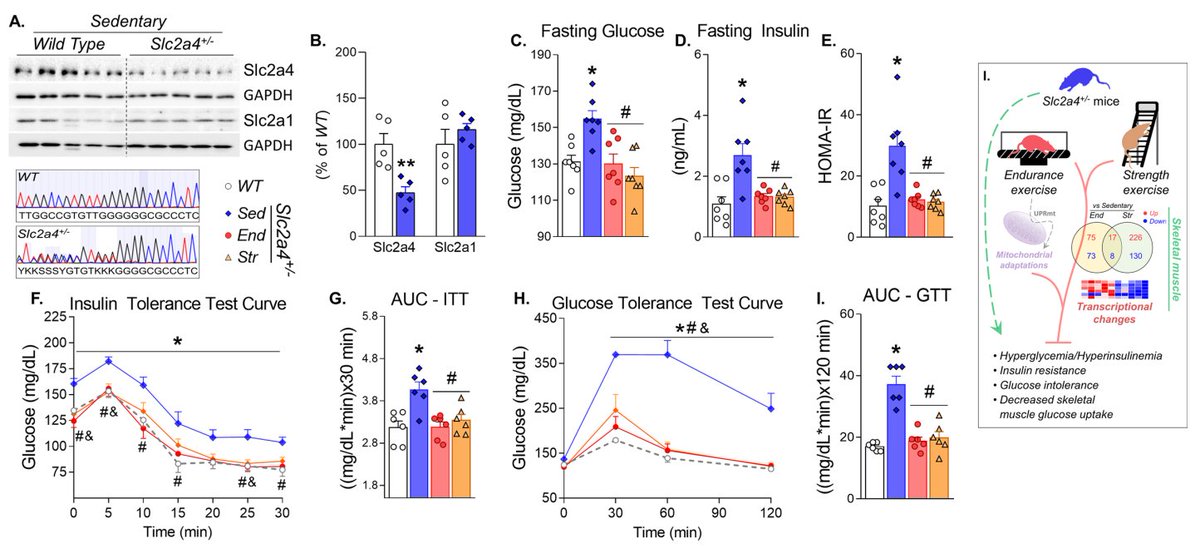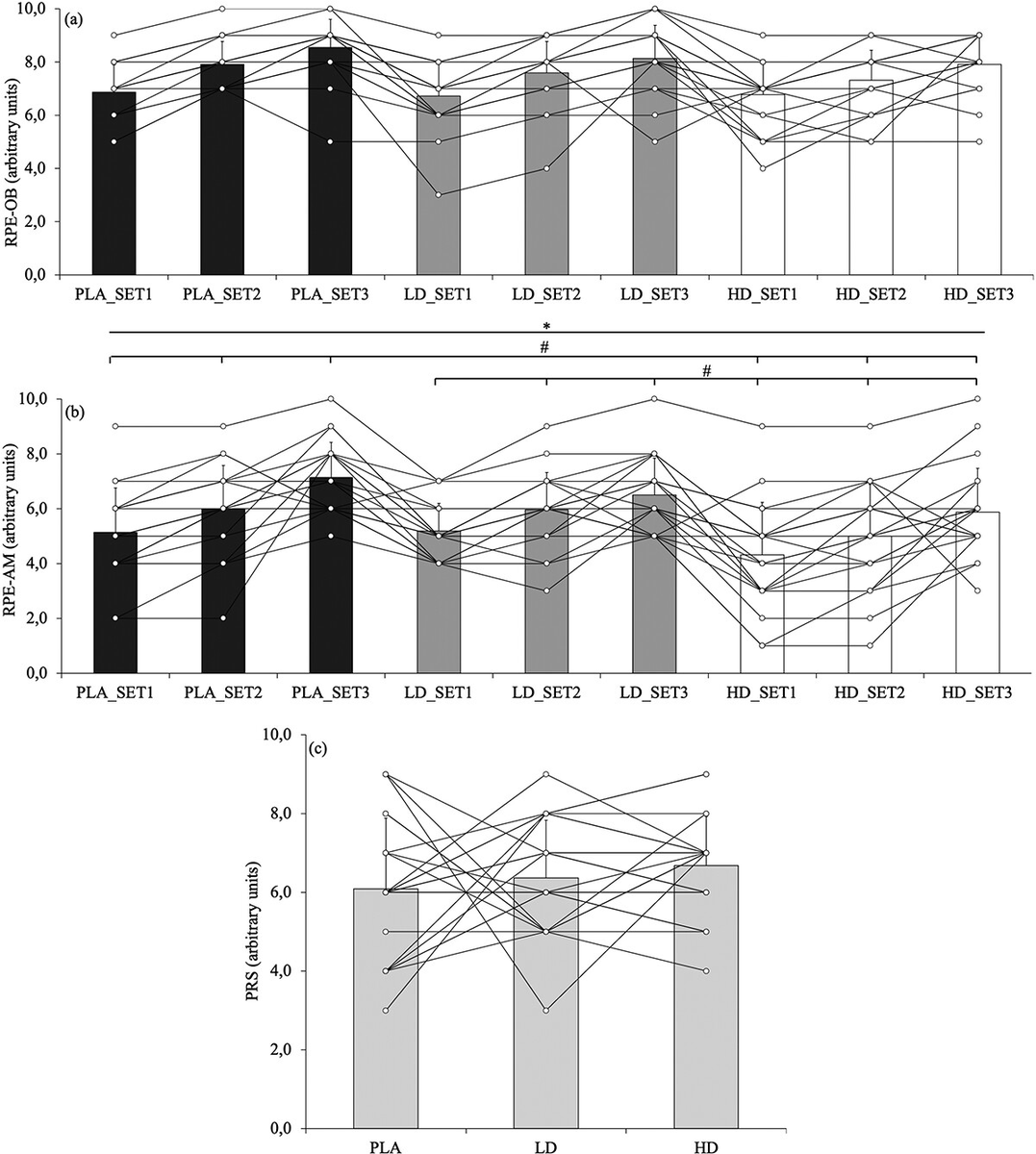This one in hyperinsulinemia- and hyperglycemia- prone mice suggests that both endurance and strength training can be effective ways to mitigate the impacts of hyperglycemia and hyperinsulinemia. 

- In this study, both short-term endurance and strength training protocols controlled the elevated fasting glucose and insulin, leading to improved whole-body insulin sensitivity and glucose tolerance.
- While endurance exercise appeared to play a vital role in transcriptome and mitochondrial activity, strength exercise mainly affected post-translational mechanisms and protein synthesis.
- Data also suggested that hyperinsulinemia or hyperglycemia can cause essential alterations in mitochondrial and markers of mitochondrial unfolded protein response at the protein level.
In skeletal muscle, a range of increased mitochondrial and mitochondrial unfolded protein response markers in the endurance exercised was observed (Tfam, VDAC, CV-ATP5A, CIII-UQCRC2, HSP60, and YME1L).
In contrast, the strength exercise training increased only two, Tfam and OPA1.
This response may explain the improved mitochondrial function observed only in mice performing the endurance training protocol.
- That said, both short-term exercise models improved skeletal muscle glucose uptake in response to insulin and improved whole-body insulin sensitivity and glucose tolerance.
- Finally, it is worth noting that the effects of both physical exercise protocols on glycemia and insulinemia were abolished 90 hours after the final exercise session.
Effects of short-term endurance and strength exercise in the molecular regulation of skeletal muscle in hyperinsulinemic and hyperglycemic Slc2a4+/− mice
doi.org/10.1007/s00018…
#exercise #muscle #strength #lift #GetStrong #cardio #hiit
doi.org/10.1007/s00018…
#exercise #muscle #strength #lift #GetStrong #cardio #hiit
• • •
Missing some Tweet in this thread? You can try to
force a refresh

 Read on Twitter
Read on Twitter








